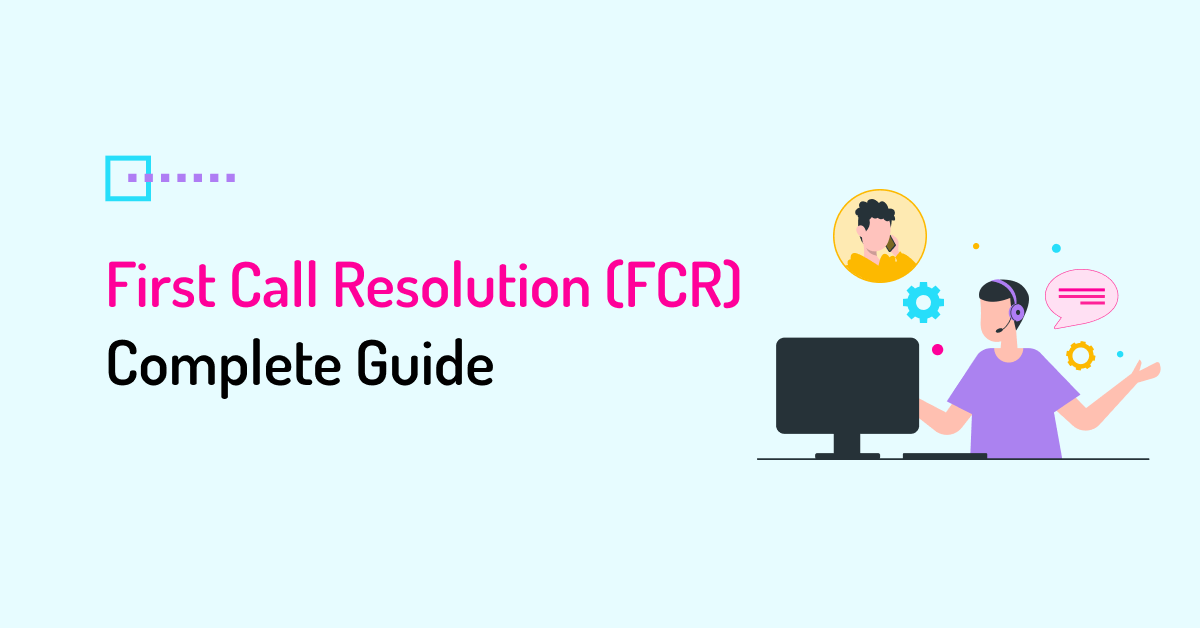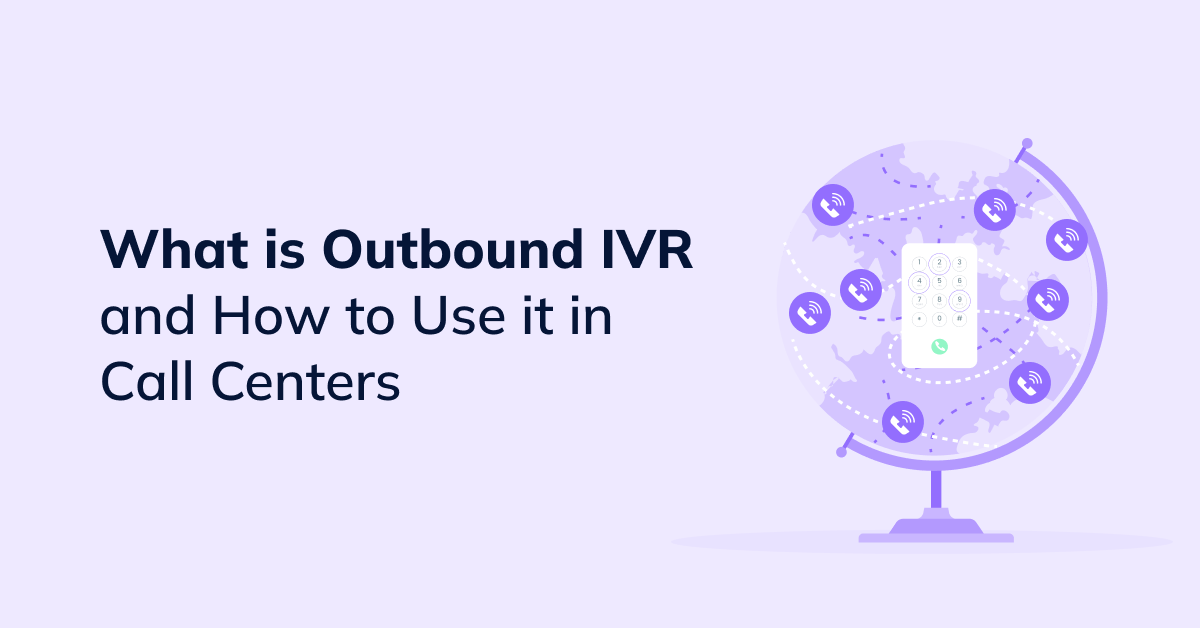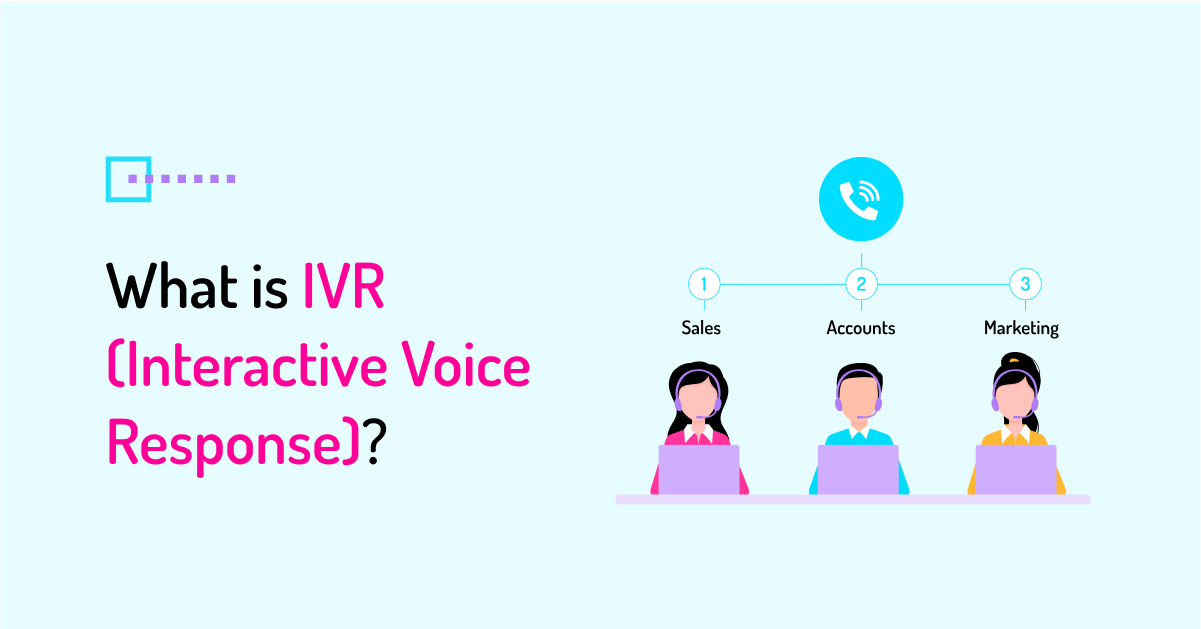The primary goal of any call center is to deliver a consistently high level of customer service and satisfy customers’ expectations while optimizing customer support costs. Considering that the majority of consumers expect their issues to be resolved during the first contact with a business, improving First Call Resolution rate is a critical objective for inbound call centers.
What is First Call Resolution?
First Call Resolution (FCR), also known as One-call Resolution or First Contact Resolution, measures the ability of a customer support team to resolve customer issues during the first interaction, eliminating the need for customers to contact a company again regarding the same problem.
FCR is one of the most essential Key Performance Indicators to measure in contact centers. Along with other important metrics and KPIs, it helps evaluate the overall performance of a contact center, agent efficiency, and customer satisfaction.
First Call Resolution can also have a significant impact on call center operating costs. An improvement in FCR ultimately results in reduced inbound call volume since fewer customers need to call back multiple times to resolve their issue, lower customer churn due to increased client satisfaction, improved agent productivity, and reduced cost per call.
How to Measure First Call Resolution?
There are two ways to measure FCR – externally by asking customers and internally by tracking follow-up customer calls.
External FCR measurement
The external measurement of First Call Resolution relies on gathering data directly from customers, and it is therefore viewed as a more accurate method of measuring FCR. It can be done by asking a customer whether they consider their issue resolved at the end of an interaction or through conducting post-call phone or email customer feedback surveys after the interaction.
Internal FCR measurement
The internal measurement of First Call Resolution is done by collecting data through call center software and customer relationship management (CRM) systems. It is based on tracking repeat customer calls regarding the same issue within a specific period (e.g., within 1 to 30 days). This method of measuring FCR tends to be less accurate as it relies on the call center’s own internal standards, which might be challenging to define correctly.
A common mistake when tracking FCR internally is confusing it with repeat contacts, which should be a separate metric. Measuring FCR based on repeat contacts might provide a distorted view, as the customer might contact you again about an entirely different issue.
Challenges of Measuring First Call Resolution
One of the major challenges of measuring FCR is the lack of a standard First Call Resolution definition, often making it difficult for contact centers to define and measure it correctly.
Another common challenge is limited customer feedback with external FCR measurement, which requires customers to determine whether their issue was resolved on the first call. Not all customers might be willing to provide feedback, and those who do may not always provide accurate feedback.
How to Calculate First Call Resolution Rate?
To calculate First Call Resolution, the total number of calls resolved during the first interaction is divided by the total number of calls received over a certain period.
The FCR formula is the following:
FCR = (Total number of calls resolved on the first contact / Total number of calls received) x 100
For example, if a customer service team resolved 700 calls out of 1000 total calls, the FCR rate would be 70%. The higher the number, the better your team is at resolving customer issues on the first contact, which is a good indicator of the overall operational efficiency of the contact center.
Benefits of Improving First Call Resolution
While FCR should be tracked alongside other metrics and KPIs, improving it is a common goal for managers. Aiming to speed up the issue resolution process and reducing the number of repeated calls can bring various benefits, such as:
- Improved customer satisfaction
- Better customer experience
- Increased customer retention and referrals
- Reduced customer support costs
- Improved agent experience
1. Improved customer satisfaction
A high FCR typically results in improved customer satisfaction. A study conducted by SQM Group found that for every 1% improvement in FCR, there is a 1% improvement in customer satisfaction, but every time a customer has to call back to resolve their initial issue, customer satisfaction drops by 15%, on average.
2. Better customer experience
FCR ultimately leads to a better customer experience. Getting an issue resolved during a single interaction, no matter the length of time required, is the most crucial aspect of a good customer service experience for 33% of consumers, according to Microsoft’s State of Global Customer Service report.
3. Increased customer retention and referrals
When customer queries are resolved on the first contact, that improves your Customer Effort Score (CES) and Net Promoter Score (NPS), which helps drive more loyalty and retention and prevents customer churn. Satisfied customers are also more likely to share their positive experiences, meaning increased referrals.
4. Reduced customer support costs
Improved First Call Resolution means your customer support agents will have fewer repeat calls, decreasing overall inbound call volume. That also means agents can handle more calls during the same amount of time, lowering the cost per call and the cost of staffing a contact center.
5. Increased cross-selling
When customer requests are successfully handled on the first call, customers are more open to accepting cross-selling and up-selling offerings. A study by SQM Group on the First Call Resolution revealed that cross-selling acceptance rate increases by 20% when a customer’s call is resolved.
6. Improved agent experience
Dealing with customers who need to call a second or third time regarding the same issue often means having to interact with frustrated customers, which might create additional stress for a support agent. For every 1% improvement in FCR, there is a 1%-5% improvement in employee satisfaction (ESAT).
How to Improve First Call Resolution?
Defining how to measure FCR
The first step to improving First Contact Resolution is to define how FCR will be measured within a contact center and how this information will be further used.
Answering the following questions might be helpful:
- What is your FCR target?
- What channels does FCR apply to?
- Will the FCR be measured through post-call surveys or tracked in your CRM system?
- What is considered a repeat call in your setup?
- Does a call escalation affect FCR?
- Will abandoned calls be included in your FCR calculations?
- How often will you measure FCR?
- How will the information be reported, analyzed, and used?
Setting FCR goals in tandem with other metrics
When defining your First Contact Resolution goals, it’s important to avoid setting conflicting performance goals that might confuse agents, such as increasing FCR and reducing the Average Handle Time (AHT) at the same time.
E.g., if you are aiming to achieve an FCR rate of 80%, but your agents are also expected to prioritize shortening the Average Handle Time, it might be difficult for them to choose between these two goals.
Agents should clearly understand which KPIs should be prioritized to achieve your contact center’s objectives. In addition, improving First Contact Resolution shouldn’t be the main goal for agents.
The primary goal of a customer support team is to successfully resolve customers’ issues, even if it means taking longer to do it, escalating the call to a senior manager, or having to call a customer back later to provide a resolution.
Access to customer insights
Equipping your customer service team with professional call center software that is integrated with your CRM system and offers a 360-degree customer view from a centralized dashboard is critical to improving FCR.
With customer data readily available to agents (including the history of previous interactions and purchase history), it is easier for them to resolve issues in one interaction while facilitating collaboration between the agents and different departments.
Call center technology
Employing the right call center technology is the key to ensuring First Call Resolution. By taking advantage of an Interactive Voice Response (IVR) system, automated call routing, call queueing, and call forwarding features, agents can better meet customer expectations when resolving issues.
E.g., a well-thought-out IVR system and skill-based call routing ensure customer calls are directed to the most appropriate agents who have proper knowledge and skills to handle certain types of inquiries. Call routing based on language, demographics, or customer impact can also reduce the number of call transfers and increase the likelihood of first contact resolution.
Speech analytics tools
Advanced AI-powered contact center technology, such as Speech Analyzer and voice analytics software, can be a significant driver of improved FCR rates. A study by Aberdeen found that companies leveraging speech analytics experience a 76% First Call Resolution rate, on average.
Speech analytics can benefit contact centers by identifying common drivers for repeat contacts. By analyzing customer interactions through real-time or post-call speech analytics, managers can spot trends, easier identify the root cause behind repeat customer calls, and take action to resolve these underlying issues that may negatively impact FCR and the overall customer experience.
AI-based real-time speech analytics solutions with sentiment analytics capabilities can also be valuable by providing on-the-spot assistance to agents with real-time alerts during the calls, helping them resolve customer issues more efficiently while also improving customer experience.
Agent training and coaching
Proper agent training and coaching play a crucial role in improving FCR rates. First, agents should have profound and up-to-date knowledge of your products and services. Second, agents should have the right soft and call-handling skills to manage customer interactions efficiently, satisfy customers, and resolve queries in one interaction.
With call coaching and call center software features like real-time call monitoring, call whispering, and call recording, managers can reveal agent training opportunities and adjust the training process to enhance agent performance and improve First Contact Resolution.
Cross-training, peer-to-peer training, role-playing, and gamification can also contribute to increasing FCR. In addition, implementing cross-training can enable agents to handle more incoming calls without transferring or escalating them.
Extensive knowledge base
Building a comprehensive internal knowledge base and encouraging agents to document and share their collective knowledge is an efficient way to improve FCR rates in a contact center.
An internal agent-facing knowledge base can include detailed product guides, troubleshooting workflows, video tutorials – anything that can help agents easily locate answers and resolve issues quickly and efficiently.
It’s essential to timely update your support documentation whenever product changes or modifications in your processes and policies occur.
Having ready-made scripts and canned responses can also help customer service agents improve FCR by providing consistent and accurate answers to common customer issues, reducing follow-up calls, and shortening the time it takes to resolve issues.
Agent empowerment
If agents lack the decision-making authority and cannot perform certain actions (such as handling billing issues or returns, applying discounts, etc.) without prior approval from senior agents or managers, that can negatively impact FCR rates.
Reviewing your internal policies and procedures and ensuring agents are empowered and authorized to take responsibility enables them to resolve issues without escalations, improving first contact resolution.
Self-service resources
Offering customers extensive self-service options is a great way to increase FCR while also reducing the inbound call volume and freeing up agents to handle more complex issues. That can include self-service IVR, chatbots, a customer-facing knowledge base with how-to-articles, product guides, tutorials, and a FAQ section. The content should be well-organized, comprehensible, and updated to always reflect the most accurate information.
When customers are directed to self-help resources, that gives them the independence and power to better understand and solve an issue on their own. This way, if they face the same problem in the future, they’ll be able to handle things without having to repeatedly call your customer support.
FAQs
Why is First Call Resolution important?
FCR is one of the key metrics for inbound call centers to measure customer service effectiveness, agent performance, and a call center’s overall operational efficiency. High First Call Resolution rates are usually associated with higher customer satisfaction and improved customer experience. A high FCR rate also helps optimize support costs by reducing the number of repeat calls, escalations, and follow-ups.
What is the difference between First Contact Resolution and First Call Resolution?
First Contact Resolution rate and First Call Resolution rate are both customer service metrics, often used interchangeably. The only difference is that First Contact Resolution measures the percentage of customer inquiries resolved on the first attempt regardless of the support channel (phone, email, website chat, social media, etc.), while First Call Resolution is specifically related to phone interactions or IVR touchpoints.
What affects the First Contact Resolution FCR rate?
Numerous factors can affect First Contact Resolution rates. That includes the overall complexity of your products or services, your daily call volume and agent staffing levels, the quality of agent training and internal knowledge base resources, call routing options set in your call center software, and the quality and availability of customer self-service tools.
What is a good First Call Resolution rate?
A good benchmark for the FCR rate may vary based on the industry, the complexity of the products or services a company provides, and the call type. In general, the industry standard for a good FCR rate ranges between 70% and 79%. If an FCR rate within a contact center is below 70%, it might indicate that certain improvements are needed, otherwise, it can negatively impact customer satisfaction levels.





 +18889082995
+18889082995
 +442036084160
+442036084160
 +97237237006
+97237237006